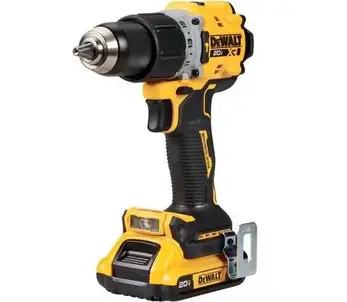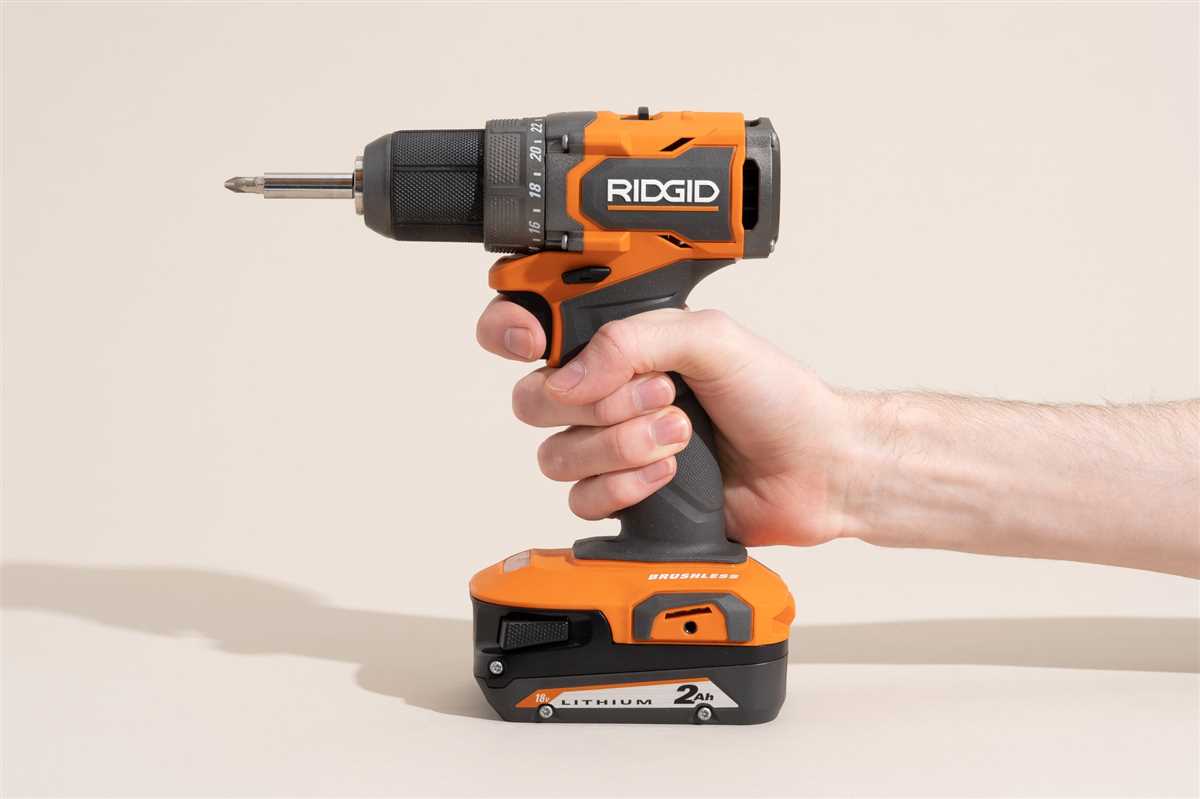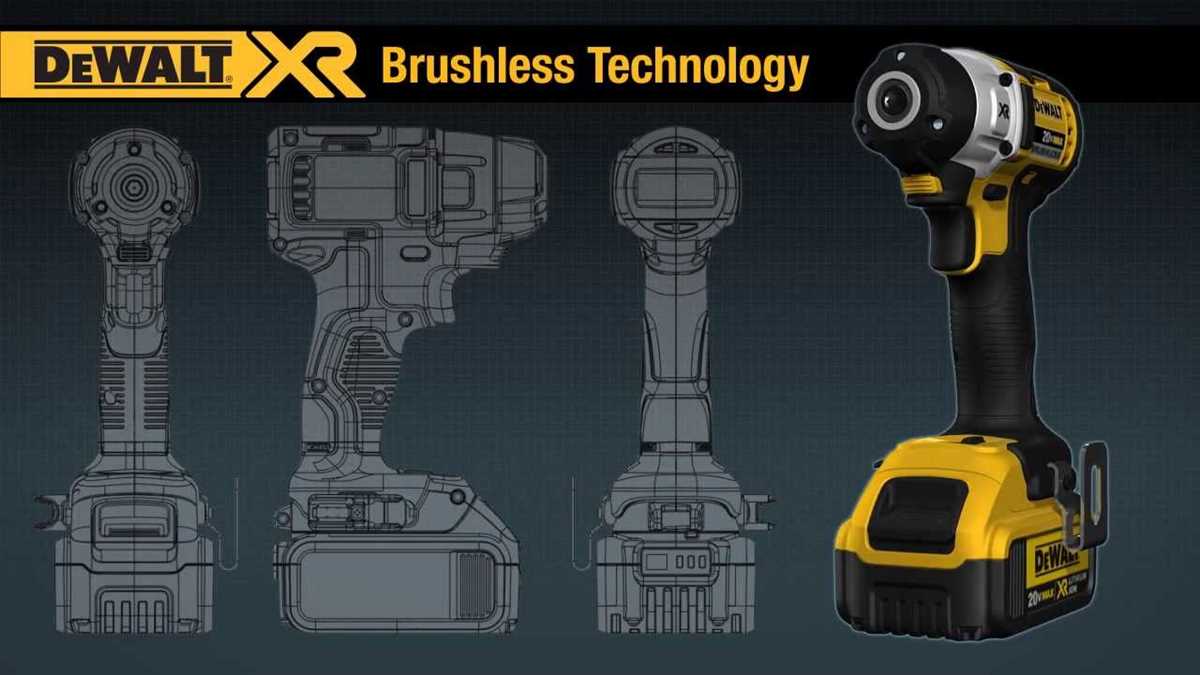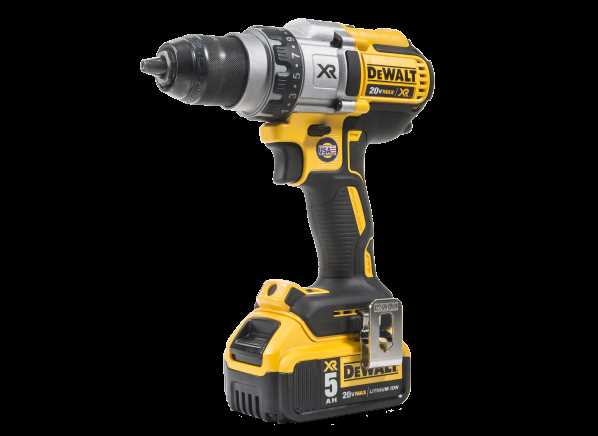Understanding the Inner Workings of a Brushless Drill

Brushless drills have become increasingly popular in recent years due to their superior performance and efficiency. Unlike traditional brushed drills, which use brushes to transmit power from the motor to the rotating shaft, brushless drills eliminate the need for brushes by utilizing an electronic controller. This controller monitors the position of the rotor and determines the optimal amount of current to supply to the motor, resulting in more power, longer battery life, and less maintenance.
At the heart of a brushless drill is the motor, which consists of a rotor and a stator. The rotor is the rotating part of the motor, while the stator is the stationary part. In a brushless drill, the rotor is made up of permanent magnets, while the stator is composed of wire windings. When a current is supplied to the wire windings, a magnetic field is created that interacts with the magnetic field of the rotor, causing the rotor to rotate.
The electronic controller is the key component that sets brushless drills apart from their brushed counterparts. This controller uses sensors to continuously monitor the position of the rotor and adjust the amount of current supplied to the motor accordingly. By constantly adjusting the current, the controller ensures that the motor operates at maximum efficiency at all times.
In addition to the electronic controller, brushless drills also typically feature advanced battery technology. Lithium-ion batteries are commonly used in brushless drills due to their high energy density, low self-discharge, and ability to deliver a consistent power output. These batteries provide the necessary power to the electronic controller, which in turn supplies the motor with the appropriate amount of current.
Overall, the inner workings of a brushless drill are complex yet efficient. Through the use of advanced electronics and innovative design, brushless drills offer superior performance, longer battery life, and increased durability compared to traditional brushed drills. As technology continues to advance, brushless drills are expected to become even more prevalent in the world of power tools.
Benefits of Brushless Technology
Brushless technology offers several advantages over traditional brushed motors. These benefits include:
- Improved Efficiency: Brushless motors are more efficient than brushed motors, resulting in less energy loss and longer battery life. This means that brushless drills can operate for longer periods of time without needing to be recharged.
- Increased Power: Brushless motors can deliver more power than brushed motors of the same size. This makes brushless drills more powerful and capable of tackling tough tasks.
- Longer Lifespan: Brushless motors have a longer lifespan compared to brushed motors. This is because they do not have brushes that wear down over time, leading to fewer maintenance requirements and longer overall durability.
- Smaller Size and Weight: Brushless motors are typically smaller and lighter than brushed motors. This makes brushless drills more compact and easier to handle, especially during extended periods of use.
- Reduced Noise: Brushless motors produce less noise and vibrations compared to brushed motors. This results in quieter operation and a more pleasant user experience.
- Advanced Control: Brushless motors offer better control and precision due to their ability to quickly and accurately adjust the speed and torque. This makes brushless drills more versatile and suitable for a wide range of applications.
In summary, brushless technology in drills provides improved efficiency, increased power, longer lifespan, smaller size and weight, reduced noise, and advanced control. These benefits make brushless drills a superior choice for both professional and DIY users.
Brushless Motor Design
Brushless motors are widely used in drill machines due to their efficiency, durability, and power output. Unlike brushed motors, they do not require brushes to transfer current to the rotor, resulting in less wear and tear and improved performance.
Brushless motor design consists of several key components that work together to provide maximum power and efficiency:
Stator
The stator is the stationary part of the motor and consists of multiple electromagnets. These electromagnets are often arranged in pairs and are responsible for generating a rotating magnetic field.
Rotor
The rotor is the rotating part of the motor and contains permanent magnets. These magnets interact with the magnetic field generated by the stator and cause the rotor to rotate.
Electronic Speed Controller (ESC)
The electronic speed controller is an essential component in brushless motor design. It controls the power input to the motor and determines the speed and direction of rotation.
Hall Sensors

Hall sensors are used in brushless motors to provide feedback on the position of the rotor. This information is then used by the electronic speed controller to accurately control the motor’s speed and torque.
Power Supply

Brushless motors require a DC power supply to operate. This power supply is typically provided by a battery pack or an external power source.
Control Algorithm
To ensure optimal performance, brushless motors utilize sophisticated control algorithms. These algorithms take into account various parameters, including rotor position, speed, and torque, to regulate the motor’s operation.
Overall, brushless motor design is a complex process that requires careful consideration of various factors. By utilizing advanced technologies and materials, manufacturers continuously strive to improve the performance and efficiency of brushless motors in drill machines.
Electronic Speed Control

In a brushless drill, the electronic speed control system is responsible for regulating the speed of the drill motor. It allows the user to adjust the spinning speed of the drill bit according to their needs. The electronic speed control works by varying the power supplied to the motor, which in turn alters the speed of the motor.
The speed control system in a brushless drill is typically controlled by a microcontroller or a dedicated motor control integrated circuit (IC). This microcontroller or IC monitors the user input and adjusts the power supplied to the motor accordingly.
How Electronic Speed Control Works
The electronic speed control system uses Pulse Width Modulation (PWM) to control the motor speed. PWM is a technique that varies the duty cycle of a digital signal to simulate an analog signal. In the case of a brushless drill, the PWM signal is used to control the average voltage applied to the motor and thus the motor speed.
When the user adjusts the speed control dial or trigger on the drill, the microcontroller or motor control IC receives the input signal and converts it into a PWM signal. The PWM signal is then fed to the motor driver circuit, which converts the digital PWM signal into a variable voltage or current signal that is suitable for driving the brushless motor.
The microcontroller or motor control IC continuously monitors the speed of the motor using feedback from sensors such as Hall effect sensors or the back electromotive force (EMF) generated by the motor. If the motor speed deviates from the desired speed, the microcontroller or IC adjusts the PWM signal to bring the motor speed back to the desired level.
This closed-loop feedback control system allows the drill to maintain a constant speed under different load conditions. It also provides protection against overloading the motor by automatically reducing the power supplied to the motor when excessive load is detected.
Advantages of Electronic Speed Control
The electronic speed control system offers several advantages over traditional mechanical speed control systems found in brushed drills:
- Improved efficiency: The electronic control system ensures that the motor operates at its most efficient speed, reducing energy waste.
- Greater control: The user can precisely adjust the speed of the drill to match the requirements of the task at hand.
- Increased motor lifespan: The electronic speed control system helps to prevent motor overheating and excessive wear, thereby extending the lifespan of the drill.
- Enhanced safety: The system can automatically reduce the power supplied to the motor in case of excessive load or other fault conditions, improving overall safety.
Conclusion
The electronic speed control system in a brushless drill provides precise speed control, improved efficiency, and enhanced safety. It uses PWM to regulate the motor speed and employs a closed-loop feedback control system to maintain a constant speed under different load conditions. Overall, the electronic speed control system contributes to the superior performance and longevity of brushless drills.
Battery Technology
Battery technology is a crucial aspect of brushless drills, as it determines the runtime, power output, and overall performance of the tool. Traditional brushed drills typically use NiCad or NiMH batteries, but brushless drills often feature Lithium-ion (Li-ion) batteries due to their superior performance.
Lithium-ion (Li-ion) Batteries:
- Lithium-ion batteries are lightweight and offer high energy density, allowing brushless drills to be more compact and portable.
- They have a low self-discharge rate, which means that they can hold their charge for longer periods of time without losing power.
- Li-ion batteries have a higher voltage output, which translates to increased power and performance in brushless drills.
- They have a longer lifespan compared to traditional battery types, making them a more durable and cost-effective choice in the long run.
Lithium-ion Polymer (LiPo) Batteries:
- Lithium-ion polymer batteries are a type of Li-ion battery, but they feature a different electrolyte that is in gel or solid form, rather than liquid.
- LiPo batteries offer even higher energy density, which allows for longer runtime and increased power output.
- They have a flatter discharge curve, which means that the power output remains more consistent over the course of the battery’s charge.
- LiPo batteries are typically used in high-performance brushless drills that require maximum power and runtime.
Battery Management Systems (BMS):
Battery management systems are often included in brushless drills to optimize the performance and safety of the batteries. These systems monitor the battery’s voltage, temperature, and current, and protect against overcharging, overheating, and short circuits. They also balance the cells within the battery pack, ensuring that each cell is charged and discharged evenly, which improves overall battery life and performance.
Conclusion
Battery technology plays a crucial role in the performance and efficiency of brushless drills. Lithium-ion and Lithium-ion polymer batteries offer numerous advantages over traditional battery types, such as increased energy density, longer runtime, and higher power output. Battery management systems further enhance the performance and safety of these batteries, making brushless drills a reliable and powerful tool for various applications.
Efficiency and Power Output
Efficiency and power output are two key factors to consider when evaluating the performance of a brushless drill.
Efficiency
Efficiency refers to how effectively a brushless drill can convert electrical energy into mechanical power. Higher efficiency means that less energy is wasted as heat and more energy is used to drive the drill. This leads to a longer battery life and less strain on the motor.
One of the main reasons why brushless drills are known for their high efficiency is because they eliminate the need for brushes and commutators, which are found in brushed drills. These components create friction and lead to energy losses. In brushless drills, the rotor magnets are mounted on the motor shaft and the stator coils are fixed around the motor. This direct interaction of the magnets and coils allows for a more efficient transfer of power.
Furthermore, brushless drills often feature electronic controls that optimize power delivery based on the user’s needs. These controls adjust the voltage and current flowing through the motor to ensure that it operates at its most efficient point, regardless of the load.
Power Output
Power output is a measure of how much work a brushless drill can perform in a given amount of time. It is typically measured in units of watts or horsepower.
Brushless drills are known for their high power output. By eliminating the friction and energy losses associated with brushes and commutators, these drills can deliver more power to the drill bit or driver. This results in faster drilling or driving speeds and increased torque.
The power output of a brushless drill can be influenced by factors such as the voltage and current supplied to the motor, the efficiency of the motor and transmission systems, and the mechanical design of the drill. It is important to note that power output is not the only factor to consider when evaluating the overall performance of a brushless drill, as efficiency and battery life are also crucial.
Applications and Use Cases

A brushless drill is a versatile and powerful tool that finds various applications in both professional and personal settings. Due to their efficient design and advanced features, brushless drills are widely used in a range of industries and tasks.
1. Construction and Carpentry
- Drilling holes and driving screws in wooden structures
- Fastening cabinets, frames, and shelves
- Installing windows, doors, and hinges
- Assembling and disassembling furniture
2. Manufacturing and Fabrication
- Assembling and tightening metal structures
- Drilling and tapping holes in metal sheets
- Securing fasteners in automotive and aerospace industries
- Working with plastic and composite materials
3. Electrical and Electronics

- Installation and maintenance of electrical systems
- Wiring and cabling tasks
- Mounting electrical boxes and fixtures
- Repairing and working with electronic devices
4. Plumbing and HVAC
- Drilling holes for pipes and conduits
- Fastening plumbing fixtures
- Working with ductwork and ventilation systems
- Installation and maintenance of heating and cooling units
5. DIY Projects and Home Improvement
- Assembling and repairing furniture
- Hanging pictures and shelves
- Renovations and remodeling tasks
- Small-scale construction projects
These are just a few examples of the many applications of brushless drills. Their versatility, power, and efficiency make them indispensable tools in various industries and for a wide range of tasks.
Final Thoughts
In conclusion, understanding the inner workings of a brushless drill can help users make more informed decisions when purchasing and using this type of power tool.
Brushless drills offer several advantages over their brushed counterparts, including longer battery life, increased power output, and improved durability. By eliminating the need for brushes and commutators, brushless drills are able to deliver more efficient and reliable performance.
One of the key components of a brushless drill is the electronic circuitry, which controls the flow of electricity to the motor. This circuitry utilizes sensors to detect the position and speed of the rotor, allowing it to adjust the current accordingly and optimize the drill’s performance.
The motor in a brushless drill is composed of a rotor and stator, with the rotor being made up of permanent magnets and the stator featuring copper wire coils. When an electric current is applied to the stator, a magnetic field is created that interacts with the magnets on the rotor, resulting in rotational motion.
By using a brushless motor, the drill is able to generate torque more efficiently and effectively, making it ideal for heavy-duty and demanding applications. Additionally, the absence of brushes and commutators reduces the risk of wear and tear, resulting in a longer lifespan.
Overall, brushless drills represent a significant advancement in power tool technology. Their superior performance, longer battery life, and increased durability make them a worthwhile investment for both professionals and DIY enthusiasts.
So, whether you’re a professional contractor or a DIYer looking to tackle your next project, consider investing in a brushless drill. Understanding how it works can help you make the most out of your tool and achieve better results.
FAQ:
How does a brushless drill work?
A brushless drill works by using magnets to create the magnetic field needed for rotation. It does not use brushes to transfer power, which reduces friction and increases efficiency.
What are the advantages of a brushless drill?
There are several advantages of a brushless drill. Firstly, it has a longer lifespan because there are no brushes to wear out. Secondly, it is more efficient and provides more power. Lastly, it is quieter and produces less heat compared to traditional brushed drills.
Can you use a brushless drill for heavy-duty tasks?
Yes, brushless drills are suitable for heavy-duty tasks. They have a high power output and can handle tough materials with ease. However, it is important to choose a drill with the appropriate voltage and torque rating for the specific task at hand.
Are brushless drills more expensive than brushed drills?
Yes, brushless drills are generally more expensive than brushed drills. This is because they use advanced technology and offer several advantages over traditional brushed drills. However, the higher cost is often justified by the increased performance and durability of brushless drills.
Video:











